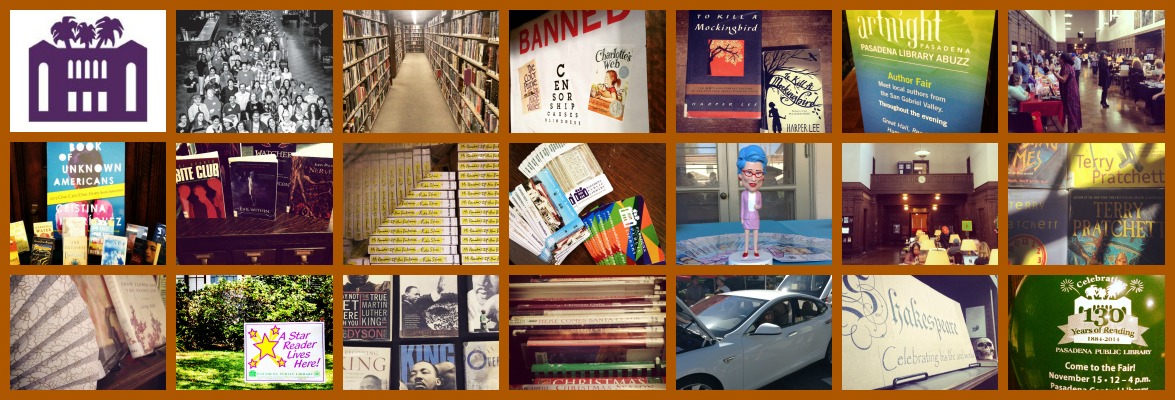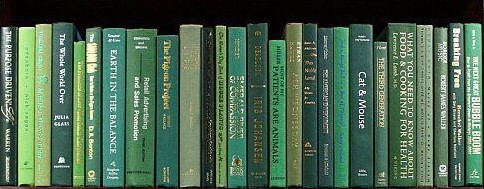March is unofficially a green month. Just like how February is a red month, October an orange month, and November a brown month. March is green mostly because of St. Patrick’s Day, the greenest of days when many of us wear green because according to tradition it’s supposed to make one invisible to leprechauns, who’ll pinch you if they see you. But this holiday isn’t the only reason March is so green. Spring begins and nature is in full bloom during this month, so St. Paddy’s Day aside March brings about an emerald hue all around us.
With nature’s greenery everywhere we look, it’s hard not to think about the environment and how we can help it. March is a good month to kick off that goal of yours to go green. If you’ve been thinking about what you can do to be more ecologically responsible and live more sustainably, here are some books that offer great ideas on how to go green and save money and have fun doing it. These books are also great reads for those who are already living the green life and for whom every month is a green month!
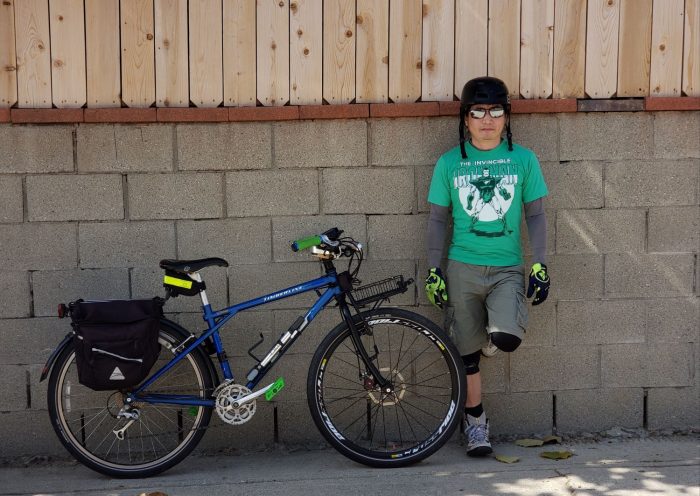
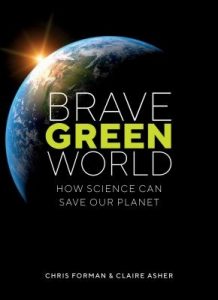 Brave Green World: How Science Can Save Our Planet by Chris Forman and Claire Asher
Brave Green World: How Science Can Save Our Planet by Chris Forman and Claire Asher
This book delves into the issues of human systems of energy production and manufacturing. Whether it’s industrial agriculture, building cars, or generating electricity, all these processes produce waste—lots of it. In nature, there is little waste in the use and production of energy, and the authors, both scientists, make an argument that we can learn from nature’s efficient circulatory ecosystems. They describe how we can combine cutting-edge manufacturing and biology to solve the problems of waste and pollution. They address the major issues of climate change and argue how science and technology can offer solutions to Earth’s existential crisis. A recommended read if you’re a science geek!
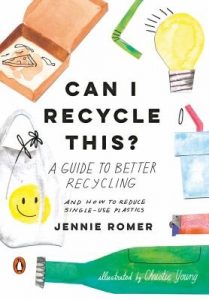 Can I Recycle This?: A Guide to Better Recycling and How to Reduce Single-Use Plastics by Jennie Romer
Can I Recycle This?: A Guide to Better Recycling and How to Reduce Single-Use Plastics by Jennie Romer
Do you often find yourself asking if something you’re about to toss out can be recycled? If yes, then this book is for you. It gives you direct answers to whether many common household items can or can’t be recycled and gives readers a behind-the-scene look at how recycling actually works. Also, many municipalities have their own recycling rules, which can be confusing, and this book helps us understand the various regulations to help us make informed decisions on recycling.
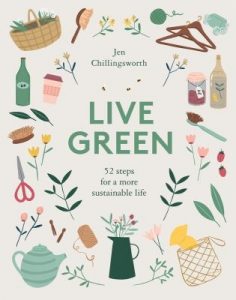 Live Green: 52 Steps for a More Sustainable Life by Jen Chillingsworth
Live Green: 52 Steps for a More Sustainable Life by Jen Chillingsworth
The global community is more environmentally conscious today than it has ever been since the 1970s, and many of us are already doing our part in being more green. However, we still wonder if we can do more. This practical guide offers 52 tips and changes we can make to our homes and lifestyle—from food, recycling, cleaning, gardening to fashion, shopping, and daily habits. Discover how to get the most out of life by living more sustainably and intentionally.
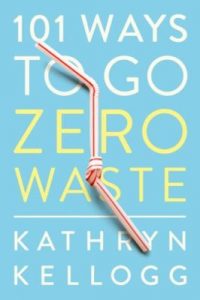 101 Ways to Go Zero Waste by Kathryn Kellogg
101 Ways to Go Zero Waste by Kathryn Kellogg
Anyone who wants to go hardcore in living the green life should give this book a good reading. Many things we take for granted and use simply because they’re convenient and readily available can be bad for the environment, like straws, plastic grocery bags, and other items deemed “disposable.” Kellogg offers tips on how to minimize waste and trash in our daily life. For example, rather than constantly buy bottled water, why not use a reusable water bottle; and instead of using harsh household chemicals to clean, make your own cleaning solutions using chemical-free products you have at home. Sounds simple, right? That’s because it is! You’ll be amazed at how easy and financially feasible going green is.
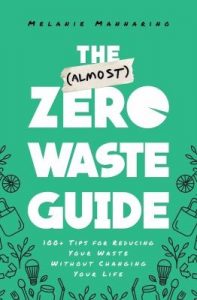 The (Almost) Zero Waste Guide: 100+ Tips For Reducing Your Waste Without Changing Your Life by Melanie Mannarino
The (Almost) Zero Waste Guide: 100+ Tips For Reducing Your Waste Without Changing Your Life by Melanie Mannarino
Here’s another book that offers more tips for reducing waste. As the title suggests, we don’t have to drastically alter our life to be environmentally friendly. Many of the tips are really simple and don’t require you to spend loads of money or bend backwards to do. Small and simple changes to our habits and lifestyle can have a huge and positive impact on our environment, climate, and health. This practical guide will help you live a greener and more sustainable life that’s almost zero waste and cost almost zero dollars!
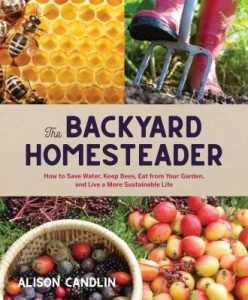 The Backyard Homesteader: How to Save Water, Keep Bees, Eat from Your Garden, and Live a More Sustainable Life by Alison Candlin
The Backyard Homesteader: How to Save Water, Keep Bees, Eat from Your Garden, and Live a More Sustainable Life by Alison Candlin
One way to go green and live a more sustainable life is to be self-sufficient, which often means growing your own food, making your own clothes among many other things. It requires a certain kind of dedication, but it’s a lifestyle that many people are adopting. If homesteading interests you, then this book is for you. It covers everything you need to know about living off the land. It gives advice on planning, establishing, and maintaining a small-acre farm or a backyard garden. But it also includes practical tips on saving resources and making use of the free natural resources available to us, and that usually translates to saving lots of money.
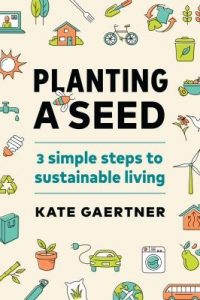 Planting a Seed: 3 Simple Steps to Sustainable Living by Kate Gaertner
Planting a Seed: 3 Simple Steps to Sustainable Living by Kate Gaertner
Sustainable living might sound like a huge undertaking for many, because we tend to think it means giving up many things that make our lives so much easier. That’s far from the truth. It doesn’t have to be hard nor feel like a sacrifice, and this book shows you how to develop an action plan that will help you develop new habits and ways of living that fit into your daily life. Going green is often about making changes, and by investigating and understanding what changes work best for you, you can make a positive impact on the planet without feeling like it’s a chore. It just takes some planning, some action, and some practice, and this book will help you do that.
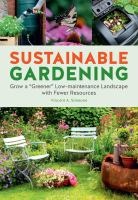 Sustainable Gardening: Grow a “Greener” Low-Maintenance Landscape with Fewer Resources by Vincent A. Simeone
Sustainable Gardening: Grow a “Greener” Low-Maintenance Landscape with Fewer Resources by Vincent A. Simeone
We all love our green lawns and pretty flower beds, and it usually takes a lot of work plus water and chemicals to make them look nice. But we can ditch the synthetic pesticides and use fewer resources and still have a nice garden and landscape. This book tells you how to grow more plants that benefit the environment and your wallet! It covers everything you need to know about sustainable gardening, such as water conservation, composting, eco-friendly pesticides and herbicides, soil maintenance, and designing a garden that is resilient, low-maintenance, and helps the environment.
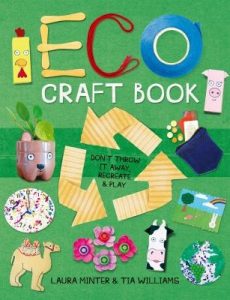 Eco Craft Book: Don’t Throw It Away, Recreate & Play by Laura Minter
Eco Craft Book: Don’t Throw It Away, Recreate & Play by Laura Minter
Crafting is a lot of fun, but did you know that it can sometimes create excess waste that’s not good for the planet? This book is full of fun and imaginative projects that you can do without spending much money because many of the things you’ll need is already in your recycling bin. For other supplies you might need to purchase, it has a useful guide for items that are safe for the environment and those that aren’t. As a bonus, there are facts, handy tips, information on climate issues, and ideas for climate activism throughout the book.
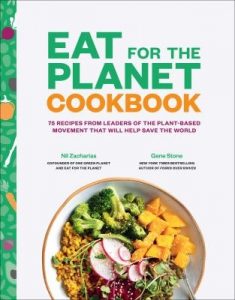 Eat for the Planet Cookbook: 75 Recipes from Leaders of the Plant-Based Movement that Will Help Save the World by Nil Zacharias
Eat for the Planet Cookbook: 75 Recipes from Leaders of the Plant-Based Movement that Will Help Save the World by Nil Zacharias
What we eat plays a big role in the future of our planet. Switching to a plant-based diet is one of the simplest and effective ways we can help the environment. This cookbook offers delicious vegan recipes from leading plant-based chefs and innovators from around the world. It’s full of photos that show just how yummy vegan dishes can be. It’s an essential guide to eating ethically and responsibly and eating well.
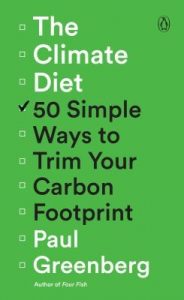 The Climate Diet: 50 Simple Ways to Trim Your Carbon Footprint by Paul Greenberg
The Climate Diet: 50 Simple Ways to Trim Your Carbon Footprint by Paul Greenberg
This book isn’t about losing weight, rather, it’s one about cutting down on our carbon consumption. Our dependence on many things that leave a huge and deep carbon footprint on the planet makes this endeavor feel overwhelming. However, Greenberg, who is a celebrated food and environmental writer, offers 50 straightforward and practical ways in which we can achieve this. Because he writes about food, there are tips about eating smart and healthy that will make you look good and feel good, so maybe there’s something about weight lost in the Climate Diet!
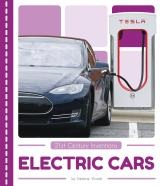 Electric Cars by Debbie Vilardi
Electric Cars by Debbie Vilardi
Ready to ditch that jalopy of yours? Electric cars are the future. Not only are they a clean mode of transportation, but many of them also look cool and are probably fun to drive. If you’re in the market for a zero-emissions vehicle or see one in your future, then you’ll want to learn more about them to help you make informed decisions when it’s time to buy. This book helps you understand how electric cars work and the technology they use.
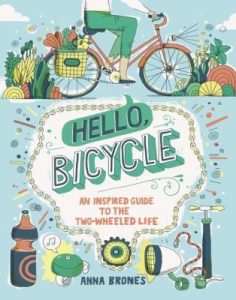 Hello, Bicycle: An Inspired Guide to the Two-Wheeled Life by Anna Brones
Hello, Bicycle: An Inspired Guide to the Two-Wheeled Life by Anna Brones
Maybe driving isn’t your thing—not even a cool electric car—what about a bike then? The bicycle is an amazing machine that is both practical and fun. As a mode of transportation, it’s definitely cheaper than a car and ownership cost is negligibly low. Plus, it’s absolutely zero emissions! Don’t have a bike but thinking about getting one and do what the Dutch do? This book is a practical guide to the bike life and covers everything you need to know about buying a bike, maintaining it, locking and storing it, commuting, and much more. With all the tips inside, you’ll be riding with confidence and style after you’re done reading it.
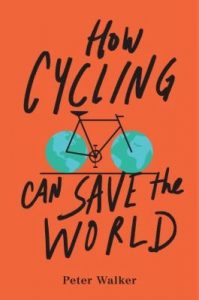 How Cycling Can Save the World by Peter Walker
How Cycling Can Save the World by Peter Walker
We live in a world where almost everything we do depends on the automobile in one form or another. Car ownership has become a part of our image and culture, but as the world evolves, the high cost of the automobile becomes quite obvious—pollution, cutting people off from their communities, and injuries and deaths caused by crashes are just some of the cost of car dependency. This book argues the best way to address many of these problems is with the…bicycle. It looks at cities like Copenhagen and Utrecht in Denmark and Germany, respectively, and points to how cycling has taken root as a way of life and has helped reduced smog and obesity and in effect improved the quality of life and mental health in those cities. Maybe cycling can save the world!
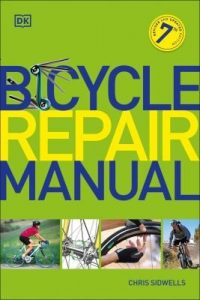 Bicycle Repair Manual by Chris Sidwells
Bicycle Repair Manual by Chris Sidwells
So you have a bike and you really want to make use of it because you want to be more green and also get some exercise out of it, but it’s not in the best riding condition. The tires are flat, the brakes squeal, it doesn’t shift smoothly, the chain is rusty, and the bike is just wobbly overall. You can take it to a bike shop and have it tuned up there or you can do it yourself. The bike is a simple machine and quite easy to work on, and this repair manual will help you get back on the saddle in no time! For those who have fancy bikes with state-of-the-art suspension and electronic gear shifting, they’re all covered in the manual as well. It is an essential reading for every cyclist.
